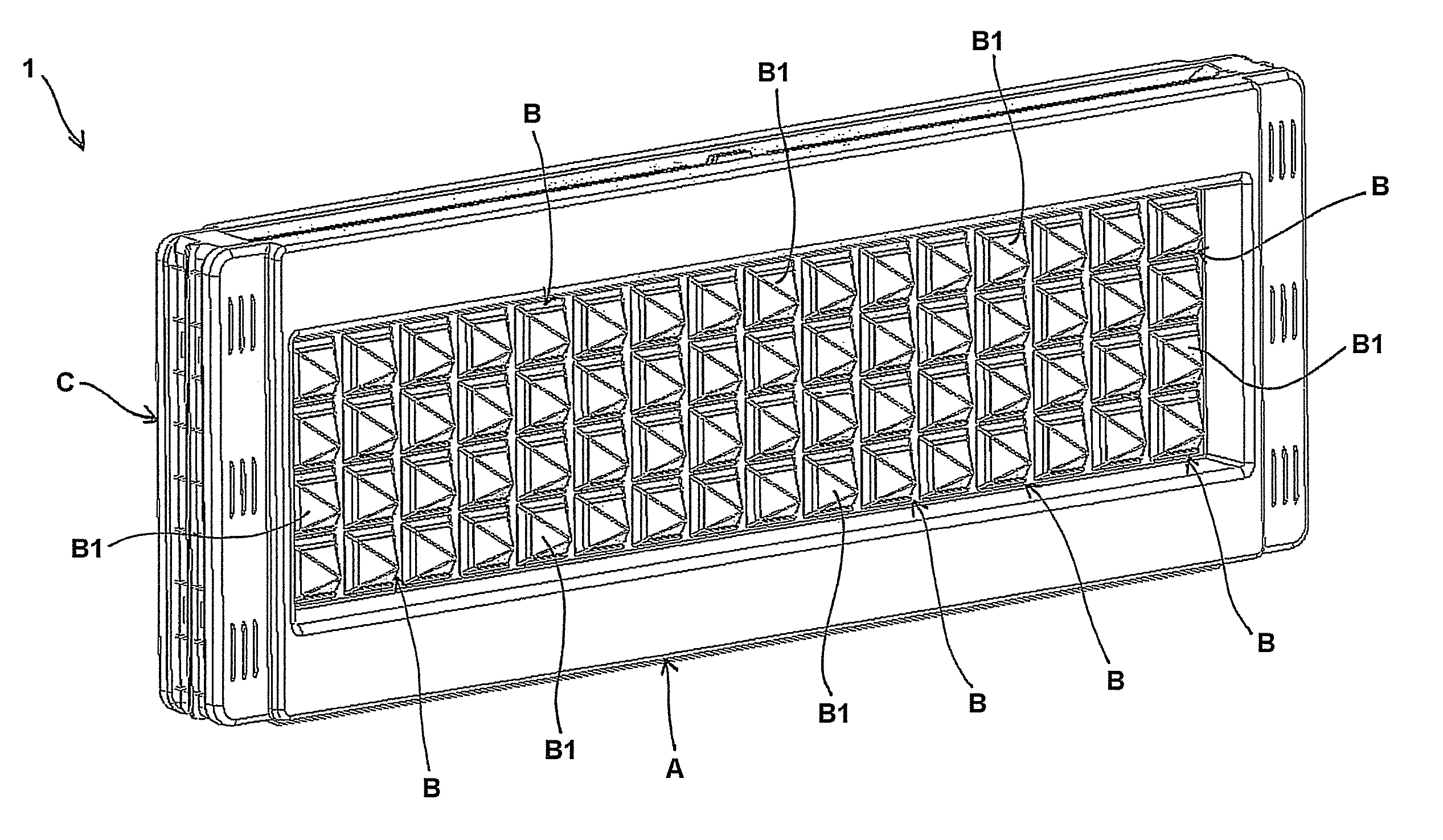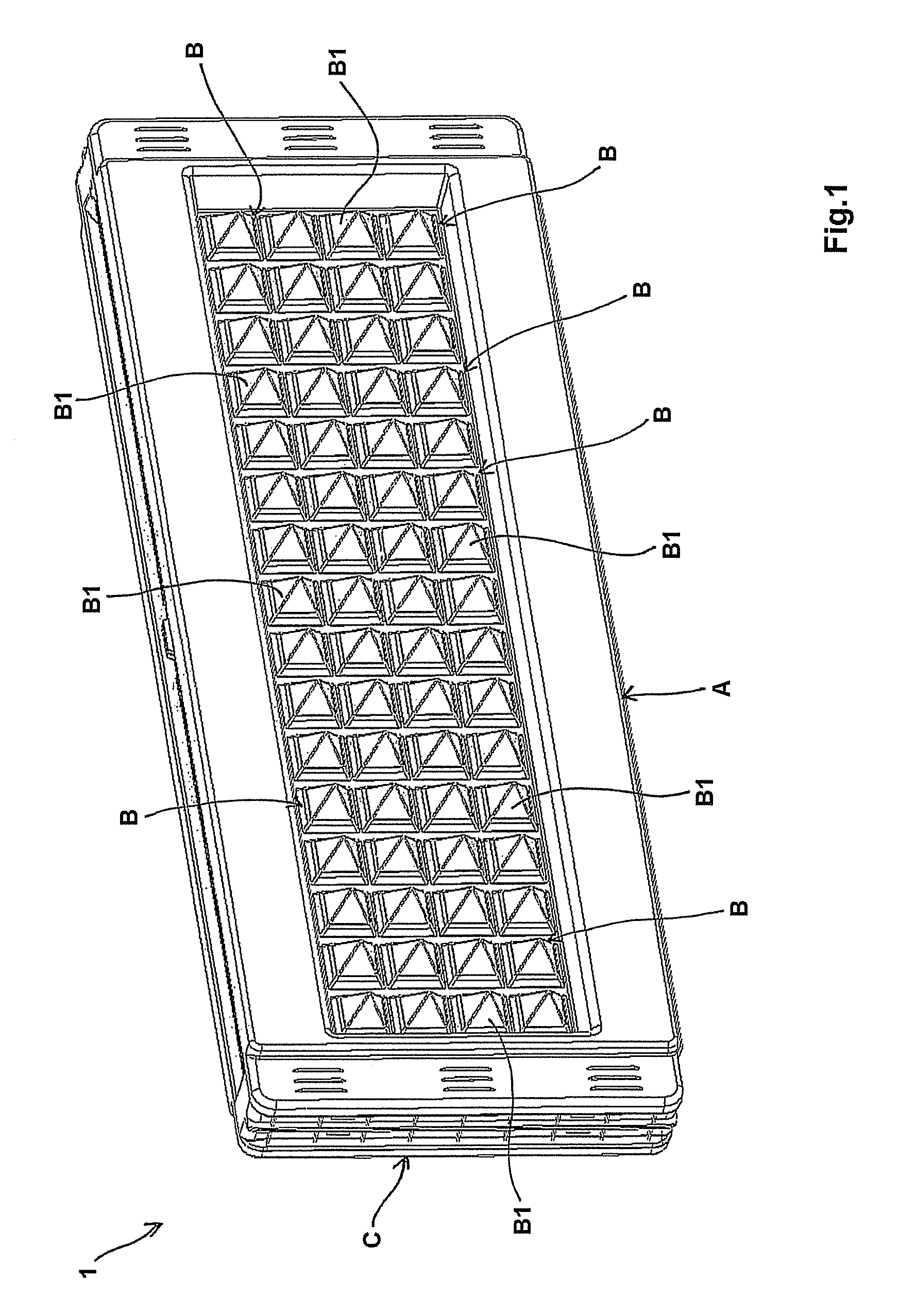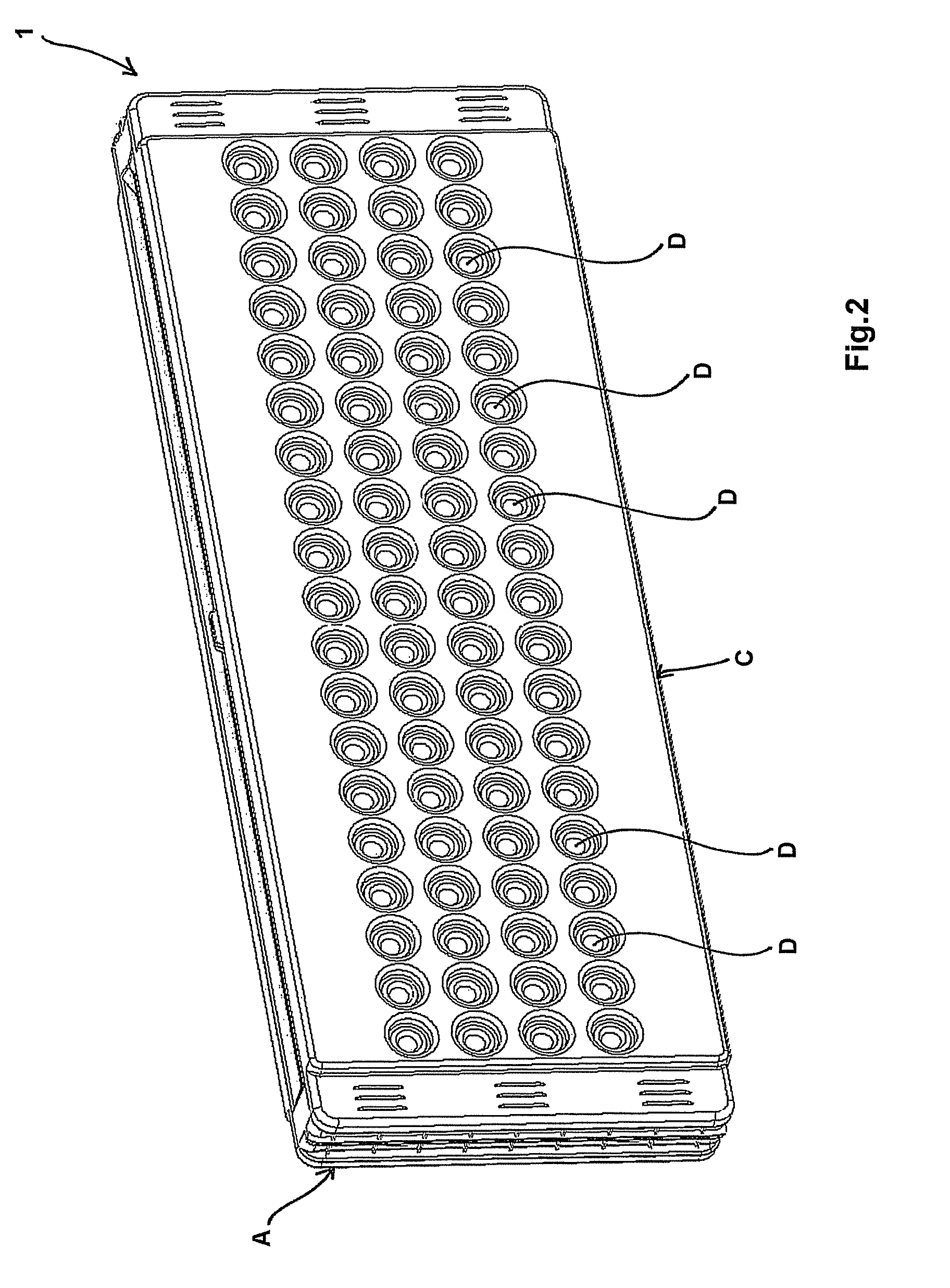Anti-noise panel
a technology of anti-noise and panel, which is applied in the direction of soundproofing, lamination, building components, etc., can solve the problems of not always suitable for a given application area, unsuitability of certain barriers currently in use, and inability to meet the construction features of noise barriers that are currently in use, etc., to achieve cost-effective, long-lasting, and effective noise reduction
- Summary
- Abstract
- Description
- Claims
- Application Information
AI Technical Summary
Benefits of technology
Problems solved by technology
Method used
Image
Examples
first embodiment
[0048]FIGS. 1 to 5 are relative to the anti-noise panel 1 according to the invention having a plurality of dampers. With reference in particular to FIGS. 1 and 2, the anti-noise panel 1 comprises a first plurality of dampers B on the said front shell A. Hereinafter this dampers B are also indicated with the expression “external dampers B” since they comprise an external part B1 which actually protrudes outwards of the sealed inner cavity IC. FIG. 1 and the section view of FIG. 4 show a preferred shape of these dampers B according to which the external part B1 has a pyramidal shape having a square base.
[0049]With reference in particular to the section view of FIG. 5, the external dampers B comprises also an internal part B2 which protrudes inwards of the inner cavity IC. The internal part B2 of the dampers B comprises lamellae 8 having different thickness and length that advantageously allow to absorb the energy deriving from sound waves of the relevant frequencies. In fact, said lam...
second embodiment
[0057]As illustrated in the section views of FIGS. 8 and 9, the configuration of the shells A, C in the second embodiment is substantially equivalent to that of the first one. Consequently, common elements relative to both embodiments are indicated in FIGS. 6-10 by using the same references used in the FIGS. 1-5. The one-piece structure of the anti-noise panel of the present invention and the successful sound absorption proved above allow to overcome the drawbacks of the prior art panels.
[0058]In a further aspect, the present invention relates to a process for manufacturing the anti-noise panel as above described, comprising the steps of
a) forming a front shell A, optionally incorporating at least one damper, by injection moulding,
b) forming a rear shell C, optionally incorporating at least one damper, by injection moulding, and
c) joining said front shell A to said rear shell C so that a sealed inner cavity is formed, thus obtaining the anti-noise panel.
[0059]The above process allow...
PUM
| Property | Measurement | Unit |
|---|---|---|
| frequencies | aaaaa | aaaaa |
| frequencies | aaaaa | aaaaa |
| frequencies | aaaaa | aaaaa |
Abstract
Description
Claims
Application Information
 Login to View More
Login to View More - R&D
- Intellectual Property
- Life Sciences
- Materials
- Tech Scout
- Unparalleled Data Quality
- Higher Quality Content
- 60% Fewer Hallucinations
Browse by: Latest US Patents, China's latest patents, Technical Efficacy Thesaurus, Application Domain, Technology Topic, Popular Technical Reports.
© 2025 PatSnap. All rights reserved.Legal|Privacy policy|Modern Slavery Act Transparency Statement|Sitemap|About US| Contact US: help@patsnap.com



